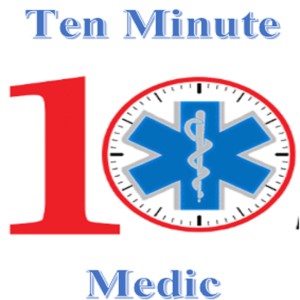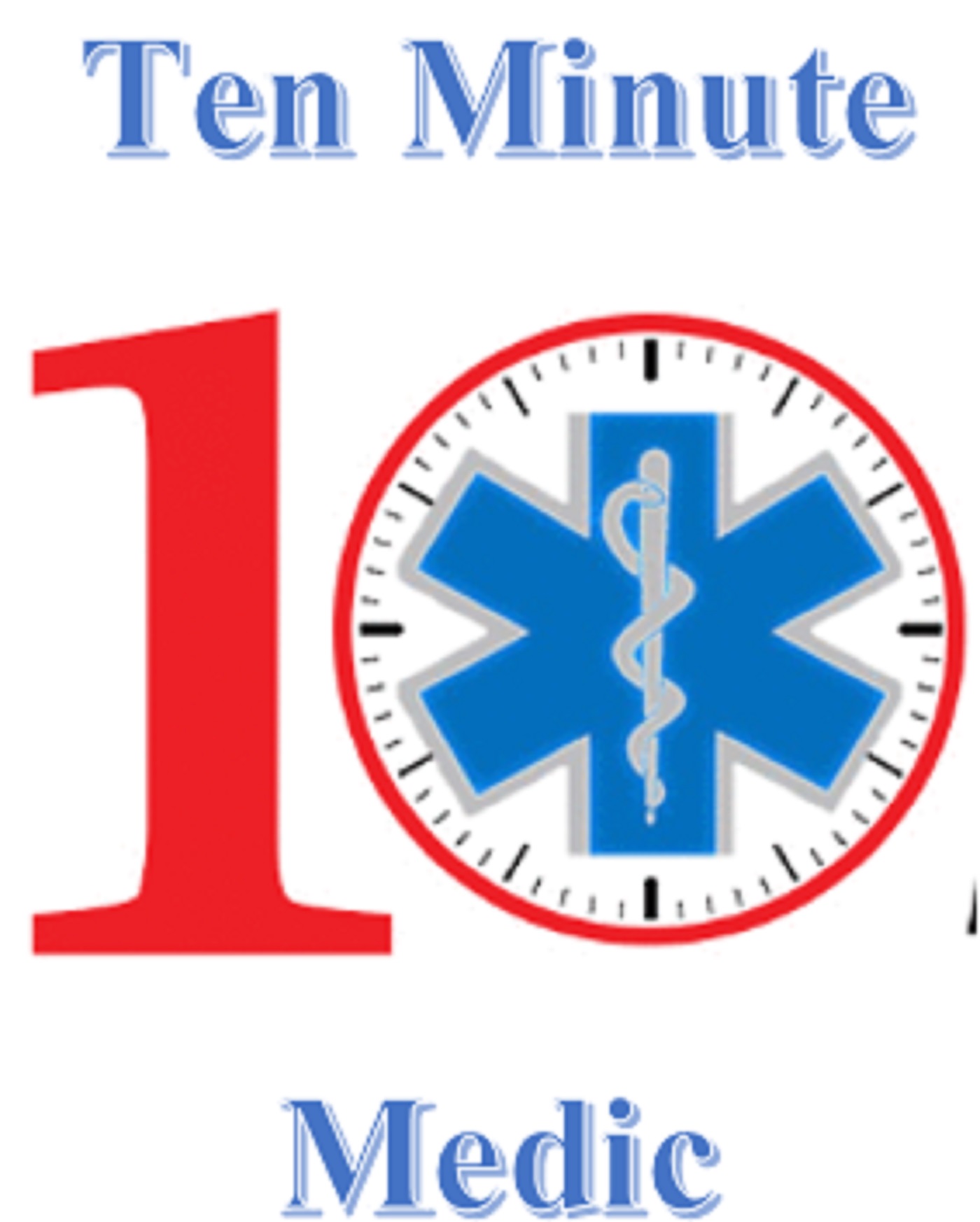Episodes

Sunday Nov 12, 2023
Cardiac Arrest in the Pregnant Patient
Sunday Nov 12, 2023
Sunday Nov 12, 2023
In this episode of the Ten Minute Medic, we delve into the complex pathophysiology of cardiac arrest in pregnant patients, emphasizing why a deep understanding of these unique physiological changes is crucial for effective pre-hospital care and improved maternal and fetal outcomes.
After you have listened, visit the Ten Minute Medic Facebook page and let me know what topic you would like to hear. If your idea is selected, I'll give you a shout out during the podcast.

Wednesday Nov 01, 2023
The Hotel California of Obstructive Respiratory Diseases
Wednesday Nov 01, 2023
Wednesday Nov 01, 2023
In this episode of The Ten Minute Medic, we dive into the essential aspects of asthma for paramedic students. Like the song Hotel California, air checks into the alveoli, but doesn't (tend) to leave without help.
Join us as we explore the pathophysiology behind this common respiratory condition, understanding the inflammation and bronchoconstriction that can lead to life-threatening situations. Learn how to assess a patient experiencing an asthma attack, including key signs and symptoms to watch for. We'll also discuss emergency treatment options, from administering bronchodilators like albuterol to the importance of oxygen therapy.
Whether you're a seasoned paramedic or a newcomer to the field, this episode equips you with the knowledge and skills to manage asthma emergencies effectively in just ten minutes.
After you listen, jump over to The Ten Minute Medic Facebook page at https://www.facebook.com/TenMinuteMedic/. While there leave us a topic or two that you would like to see covered in a future episode. Thanks!

Tuesday Oct 24, 2023
The Great STEMI Imposters
Tuesday Oct 24, 2023
Tuesday Oct 24, 2023
Welcome to our podcast, where we dive into the critical world of cardiology and explore a topic that's of paramount importance for paramedic students. Today, we're shining a spotlight on the often subtle, sometimes deceptive, yet incredibly significant issue of STEMI (ST-segment elevation myocardial infarction) mimics.
These impostors can lead to misdiagnoses and mistreatment, potentially with life-altering consequences. Join the Ten Minute Medic, as we unravel the complexities of recognizing these mimics, understanding their impact, and ultimately, saving lives through informed decisions and early interventions. Discover the key to differentiating fact from fiction in the realm of cardiac emergencies.
Once you have finished listening, head over to our Facebook page @The Ten Minute Medic and let us know what topics you would like to see covered. If selected, we'll give you credit and a shout out on the podcast.

Wednesday Oct 11, 2023
” Greasing the Skids” For Glucose Metabolism
Wednesday Oct 11, 2023
Wednesday Oct 11, 2023
Picture insulin as a key that unlocks the doors of our cells, allowing glucose to enter and power our bodies. When this intricate dance falters, as in diabetes, it can lead to a terrible symphony of health issues. So, think of insulin as the ultimate conductor, directing the harmonious flow of energy that keeps us in tune with life's rhythms.
In this week's episode of the Ten-Minute Medic, we look at how important this hormone is and a little deeper at how it works.
Our next podcast is entitled "The Three Great Imposters"...a look at three common STEMI imposters. Identifying STEMI imposters is like distinguishing a wolf in sheep's clothing in the world of heart emergencies. These cunning look-alikes, such as pericarditis or benign chest pain, mimic the deadly ST-elevation myocardial infarction (STEMI), leading to unnecessary panic and invasive treatments.

Monday Oct 09, 2023
You Can’t Treat What You Don’t See
Monday Oct 09, 2023
Monday Oct 09, 2023
The assessment skills of the paramedic are the most important ones that she has. Yet this area continues to be one of the weakest parts of paramedic education. In this episode, we take a look at how to have an organized assessment routine of our pediatric patients.
A brand new episode will drop by the middle of the week. During this new session, we will review the important work that insulin does towards regulating blood sugar levels.

Tuesday Oct 03, 2023
RSV...It’s Not Just For Pediatrics Anymore!
Tuesday Oct 03, 2023
Tuesday Oct 03, 2023
Respiratory syncytial virus (RSV) is not limited to pediatrics and can affect geriatric populations too. In older adults, RSV can lead to severe respiratory infections, causing symptoms like coughing, wheezing, and shortness of breath, often requiring hospitalization. In this weeks podcast, we'll review the pathophysiology, symptomology and treatment of this dangerous respiratory disease.

Sunday Sep 24, 2023
Mechanism of Injury-A Replay
Sunday Sep 24, 2023
Sunday Sep 24, 2023
Mechanism of injury is important for the paramedic student to learn as it takes you beyond the obvious. You become a detective when you evaluate the clues found at the scene of a trauma...not to convict the perpetrator, but to ensure your assessment finds all of the injuries that could threaten your patient's life.

Sunday Aug 02, 2020
The Physics of Trauma Part 1
Sunday Aug 02, 2020
Sunday Aug 02, 2020
Having a basic understanding of the physical forces behind trauma will help you to begin to suspect injuries that may not always be obvious. In this first podcast, of a three part series, we will look at how Newton (the scientist, not the fig guy!) is important to the paramedic as well as the role the multiple collisions that take place during trauma can increase the incidence of trauma.

Thursday Mar 19, 2020
Orthopedic Emergencies-Compartment Syndrome and the Various Types of Fractures
Thursday Mar 19, 2020
Thursday Mar 19, 2020
In this episode we will take a look at the signs and symptoms of compartment syndrome. We'll also take a look at the types of fractures and how they might impact your patient.

Wednesday Jan 08, 2020
Shock in the Pediatric Patient Part 2 of 2
Wednesday Jan 08, 2020
Wednesday Jan 08, 2020
In this extended podcast, we take a look at the causes, pathophysiologies and treatments of some of the more common classifications of shock that you might see in your pediatric patient.

